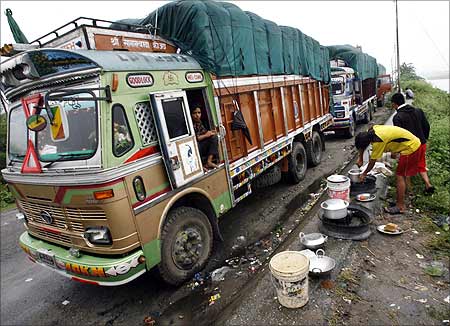The governments of Karnataka, Uttar Pradesh and Rajasthan want a lower limit of Rs 100,00,00 gross annual turnover.
 Differences remain between Centre and states over an appropriate threshold rate for the proposed national goods and services tax (GST).
Differences remain between Centre and states over an appropriate threshold rate for the proposed national goods and services tax (GST).
A committee of finance ministry and state government officials has been set up to look at it.
The governments of Karnataka, Uttar Pradesh and Rajasthan want a lower limit of Rs 10 lakh gross annual turnover. Centre and governments of Punjab and Delhi prefer Rs 25 lakh.
GST would apply for units having a turnover above the threshold.
According to government data on the situation three years earlier, units in the Rs 10-25 lakh range of annual gross revenue comprised 60 per cent of all dealers but contributed only two per cent of average national tax revenue.
The situation varies across states.
Chief Economic Advisor Arvind Subramanian wanted an even higher threshold at Rs 40 lakh in his panel’s GST report, saying this would ensure compliance and minimise the burden on smaller payers. Under GST, gross turnover will be considered for exemption limit, as against net taxable income in the current regime.
“Even we feel the limit should be higher. Rs 100,00,00 means nothing with inflation all around. In GST, we will look at gross turnover and even a small fruitseller will be earning that much,” argued an official.
“We are collecting the latest data and will update and study the revenue implications for states.
But, it is unlikely to be a significant change from the data we had three years ago.” We will try to come back with the latest data by the next meeting, he added.
Currently small-scale industries with an annual turnover of up to Rs 1.5 crore are exempted from central excise duty, but will lose the benefits under the GST regime. North-Eastern states will have separate thresholds, which will be considered in a separate meeting.
The Centre has proposed Rs 100,00,00 threshold for N-E states.
The Subramanian panel has argued that a higher threshold will minimise the burden on small taxpayers, besides achieving social objectives as poorer households are more likely to buy from smaller outlets (such as kirana shops).
The current proposal is to have a common threshold of Rs 250,00,00 for goods and services combined but raising this threshold, say up to Rs 40 lakh, may be considered, the report said.
It further said that as per the corporate income tax data, between turnover in the Rs 25-400,00,00,range, there are 32.6 lakh registered entities, accounting for just over Rs 1.04 lakh crore or Rs 1.04 trillionin total turnover.
“The benefit-cost ratio of minimising the compliance burden relative to the revenue foregone may need to be considered,” the panel said.
Crossing the threshold
The governments of Karnataka, Uttar Pradesh and Rajasthan want a lower limit of Rs 100,00,00 gross annual turnover
Centre and govts of Punjab and Delhi prefer Rs 250,00,00
Chief Economic Advisor Arvind Subramanian wanted an even higher threshold at Rs 40 lakh in his panel’s GST report, saying this would ensure compliance and minimise burden on smaller payers











